Looking for the perfect crispy chicken wing rub? You've found it. This simple 7-ingredient dry rub recipe delivers restaurant-quality wings in just 5 minutes of prep time. No special equipment needed - just pantry staples you probably already have.
Simple 7-Ingredient Wing Rub Recipe (20 Wings)
| Ingredient | Amount | Why It Works |
|---|---|---|
| Kosher Salt | 3 tablespoons | Enhances flavor and helps crisp the skin |
| Brown Sugar | 2 tablespoons | Adds caramelization without burning |
| Paprika | 2 tablespoons | Provides rich color and smoky flavor |
| Garlic Powder | 1 tablespoon | Delivers consistent garlic flavor |
| Onion Powder | 1 tablespoon | Adds depth and umami |
| Black Pepper | 1 teaspoon | Provides mild heat and complexity |
| Cumin | 1 teaspoon | Creates warm, earthy notes |
Directions: Mix all ingredients in a bowl. Pat wings dry with paper towels, apply thin layer of oil, then massage rub evenly onto wings. Let rest 30 minutes at room temperature before cooking. Cook at 400°F for 40-45 minutes until golden brown and crispy.
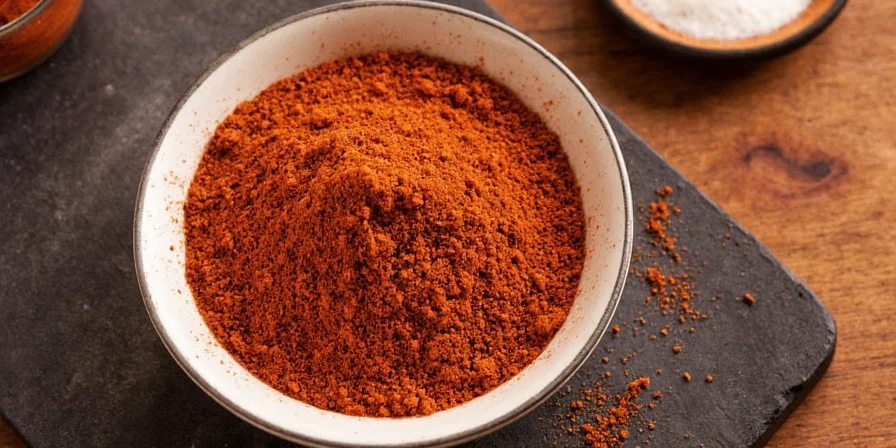
Why This Recipe Works for Home Cooks
This wing rub formula hits the sweet spot between simplicity and flavor. Unlike complicated recipes requiring hard-to-find ingredients, this version uses common pantry staples to deliver maximum crispiness and balanced flavor.
Most beginners make two critical mistakes with wing rubs:
- Using too much sugar (causes burning)
- Not drying wings properly (prevents crispiness)
Our solution: The 3:2 salt-to-sugar ratio creates perfect browning without scorching, while the simple prep method ensures crispy skin every time.
3 Easy Variations to Try
Once you've mastered the basic rub, customize it with these popular flavor twists:
| Flavor Profile | Simple Modification | Best For |
|---|---|---|
| Buffalo Style | Add 1 tsp cayenne + 1/2 tsp smoked paprika | Game day gatherings |
| Honey BBQ | Add 1 tsp chili powder + skip sugar | Summer cookouts |
| Lemon Herb | Add 1 tbsp dried herbs + zest of 1 lemon | Lighter flavor lovers |
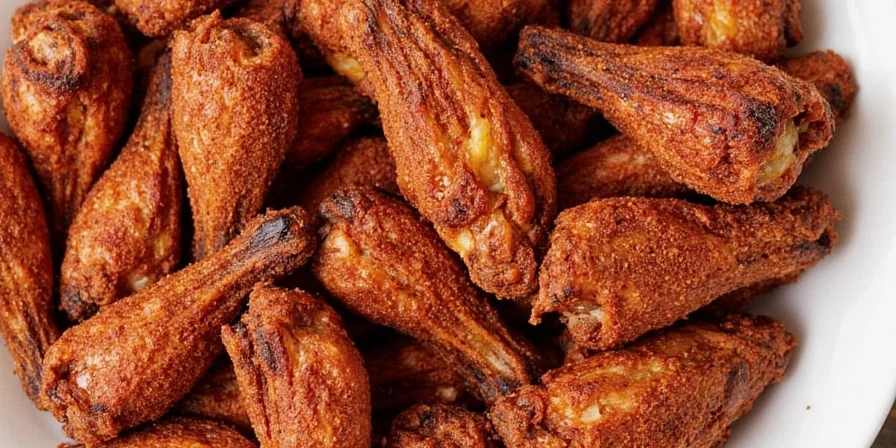
Dry Rub vs. Marinade: Which Should You Choose?
For crispy wings, dry rubs win every time. Here's why:
| Factor | Dry Rub | Marinade |
|---|---|---|
| Crispiness | ★★★★★ | ★★☆☆☆ |
| Prep Time | 5 minutes | 30+ minutes |
| Flavor Balance | Even coating | Can be uneven |
| Storage | Months in pantry | Must use immediately |
Dry rubs create that sought-after crispy exterior while marinades often make skin soggy. The rub's sugar content caramelizes beautifully during cooking, while salt draws out moisture for maximum crispiness.
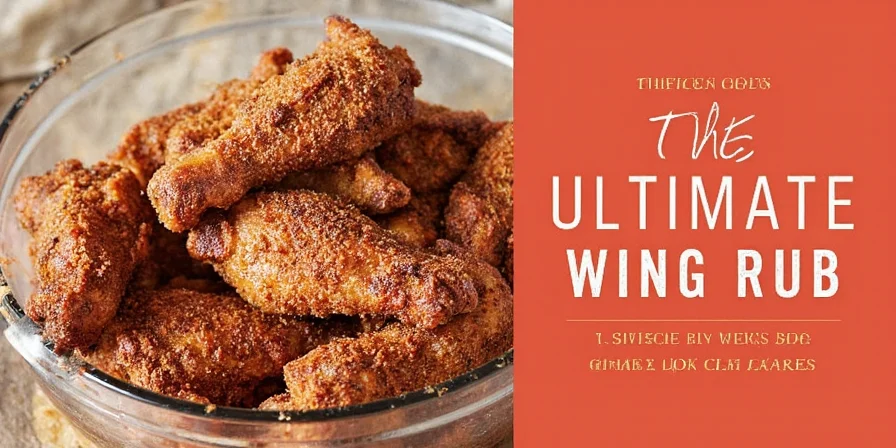
Pro Tips for Perfect Wings Every Time
- Dry wings thoroughly - Use paper towels to remove all surface moisture
- Apply thin oil layer first - Helps the rub stick without making wings greasy
- Don't skip the resting time - 30 minutes lets flavors penetrate
- Cook skin-side down first - For extra crispiness on the presentation side
- Finish under broiler - 2-3 minutes for ultimate crunch
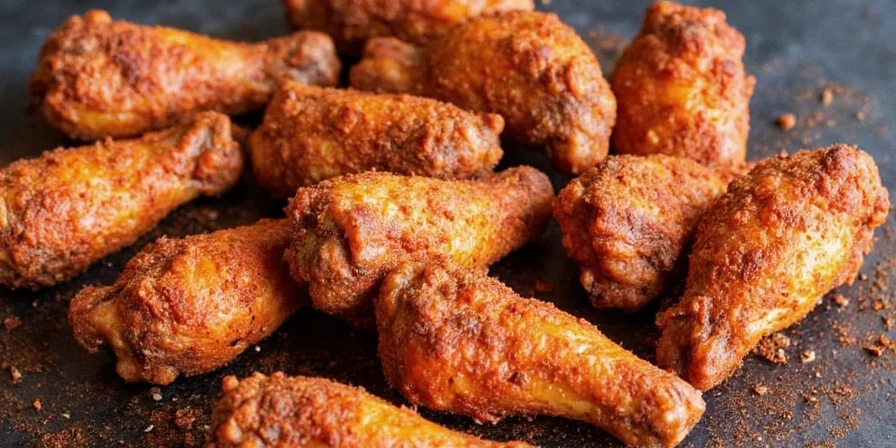
Common Mistakes to Avoid
- Using table salt instead of kosher - Table salt is denser and will over-salt your wings
- Adding fresh garlic - Burns easily and creates bitter flavors
- Skipping the oil layer - Rub won't adhere properly to dry skin
- Cooking straight from fridge - Cold wings steam instead of crisping
- Overcrowding the pan - Prevents proper air circulation for crispiness
Frequently Asked Questions
How long should wings rest with rub before cooking?
For best results, let rubbed wings rest at room temperature for 30 minutes before cooking. This allows the salt to penetrate the surface for better flavor and helps the skin dry out for maximum crispiness. For deeper flavor, refrigerate for 2-4 hours (but bring to room temperature before cooking).
Can I use this rub for other meats?
Absolutely! This versatile rub works great on chicken thighs, pork chops, and even roasted vegetables. For steak, reduce the sugar by half to prevent burning at high temperatures. The basic formula adapts well to most proteins - just adjust cooking times accordingly.
What's the best way to store leftover rub?
Store in an airtight container in a cool, dark place for up to 6 months. Glass jars work better than plastic as they prevent flavor transfer. For longer storage (up to 1 year), keep in the freezer. Check for freshness by rubbing a small amount between your fingers - it should release a strong aroma.
Why are my wings not crispy?
Three common reasons: 1) Wings weren't dried properly before applying rub 2) Oven temperature was too low (needs to be at least 400°F) 3) Pan was overcrowded. Solution: Pat wings extra dry, use a wire rack on your baking sheet, and cook at 425°F for the last 10 minutes to boost crispiness.
Can I make this recipe without sugar?
Yes, but you'll lose some crispiness and caramelization. For sugar-free version, replace brown sugar with 2 tablespoons of almond flour and add 1/2 teaspoon of smoked paprika for depth. The wings will still be flavorful but won't have the same level of caramelized crust.
Ready to Make Perfect Wings?
This simple wing rub recipe solves the most common problems home cooks face: soggy skin, uneven flavor, and complicated techniques. With just 7 ingredients and 5 minutes of prep, you can create restaurant-quality wings that will impress at your next gathering. The secret is in the balanced ratio of ingredients that work together to maximize crispiness and flavor without burning.
Many people overcomplicate wing recipes with hard-to-find ingredients or hours of preparation. This approach proves you don't need special equipment or exotic spices to make perfect wings - just the right combination of basic ingredients used properly.
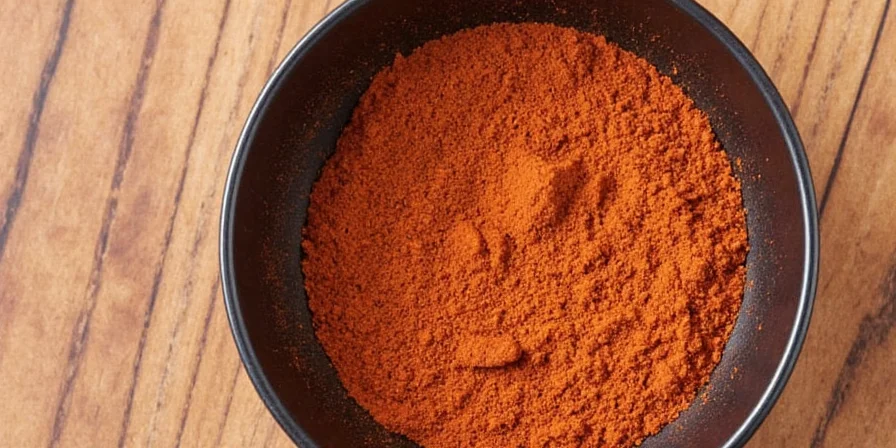

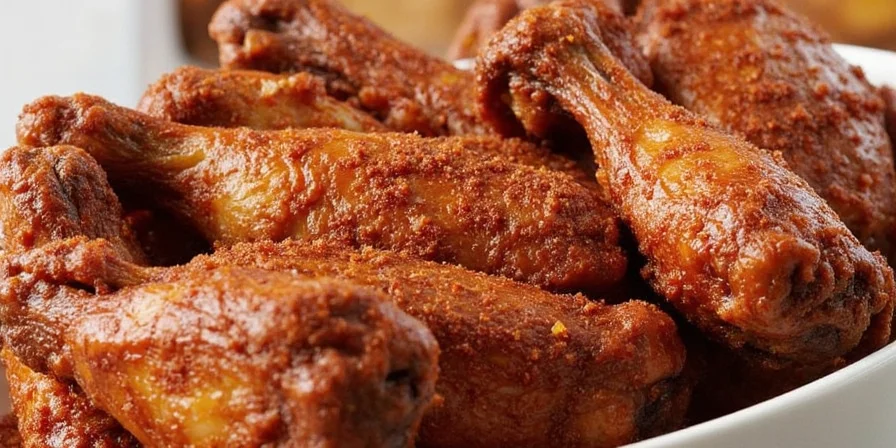









 浙公网安备
33010002000092号
浙公网安备
33010002000092号 浙B2-20120091-4
浙B2-20120091-4